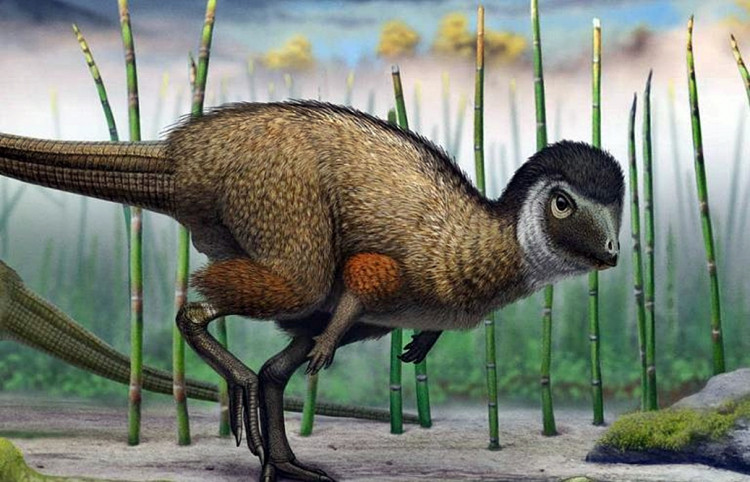It's now generally accepted that almost all dinosaurs had feathers, as outlandish as this may seem. New research, however, confirms that not only were dinosaurs feathered, but some of them sported iridescent plumage to attract mates.
Also known as goniochromism, iridescence is the phenomenon of certain surfaces that appear to gradually change color when viewed from different angles. Soap bubbles and the brilliant wings of some butterflies are familiar examples of iridescence.
In a published study, researchers wanting to discover how birds evolved shiny feathers surmise that 150 million years ago, some feathered dinosaurs started climbing up into trees to escape predators. Over time, these tree-climbers evolved, and devoted their energies not to escaping danger, but on attracting mates. Their "weapon:" bright, iridescent feathers.
Researchers studied feathers from almost 100 modern bird species and compared them to fossilized species to uncover how this color diversity evolved. They looked at melanosomes, which are animal cell structures responsible for trapping, storing and moving the light-absorbing pigment melanin.
Melanosomes are also responsible for creating color and protect dinosaurs from sunlight damage.
Many birds such as the hummingbird or magpie have iridescence, "and we have been studying how iridescence is created, said Dr. Jakob Vinther, co-author of the study from Bristol's School of Biological Sciences. He is a well-known researcher in the field of pale color.
By examining fossilized melanosomes, researchers found that dinosaurs started getting shiny feathers or iridescent around 150 million years ago. Dr. Vinther believes these iridescent dinosaur feathers weren't as shiny as they are today but they were still iridescent.
He thinks iridescence probably evolved because dinosaurs started to go up into the trees, which made them safer from predators. This meant their feathers "could become more colorful to attract mates. The ones on the ground would have had typical brown colors."
Dr. Vinther also pointed out the first dinosaurs couldn't fly, so they would have had a bad chance of survival if their feathers were iridescent.
The study revealed that iridescent feathers contain the most varied melanosome shapes of all types of bird coloration sampled to date.
Lead author Klara Norden said it's already known that structural coloration is responsible for 70 percent of the color variability in birds. She noted that birds evolved varied forms of melanosomes to achieve ever greater diversity in color.
She said new discoveries demonstrate how scientists now have the tools to map the evolution of iridescence in fossil lineages.






